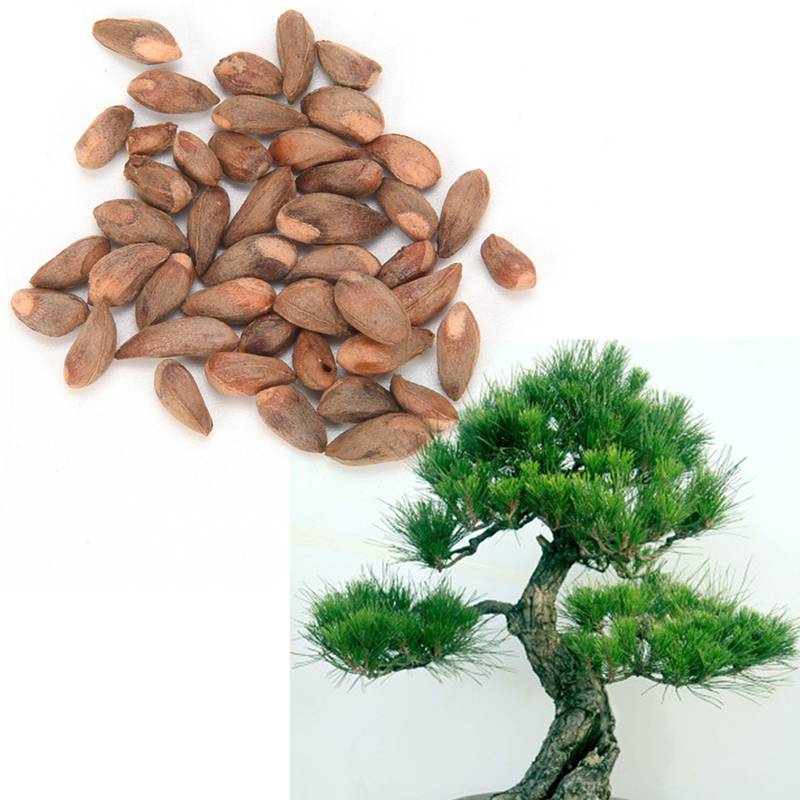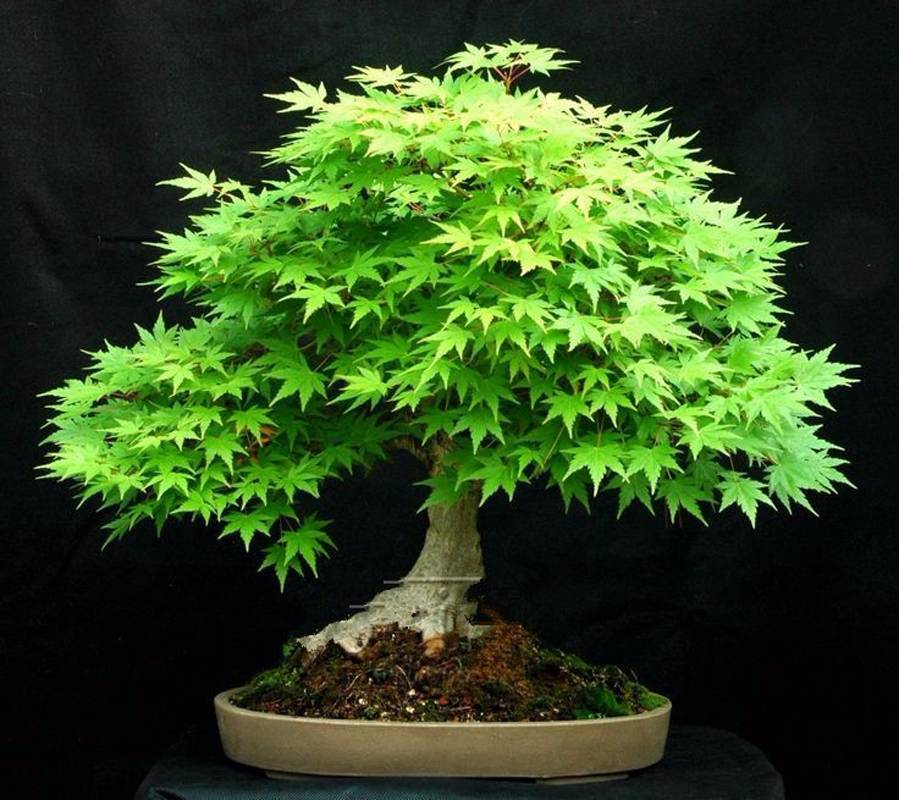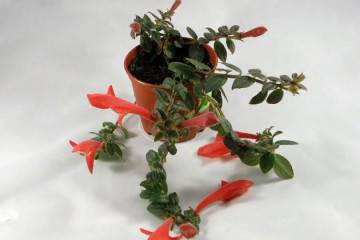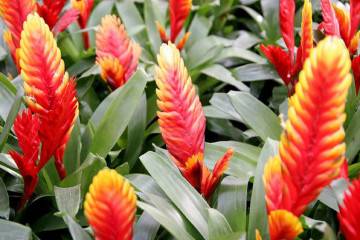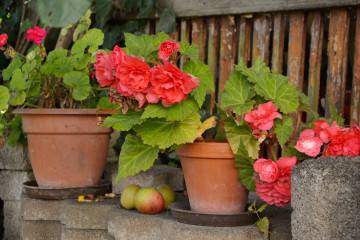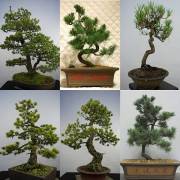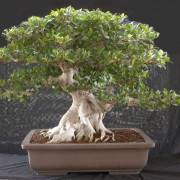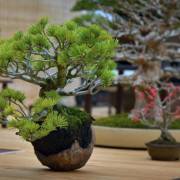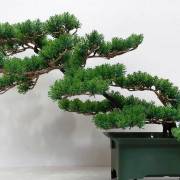Bonsai seeds - growing at home
Content:
Bonsai in translation sounds like a tree grown on a tray. Most specialists involved in the cultivation of dwarf copies of trees appreciate this as an art.
Bonsai seeds
The origins of bonsai come from China at the end of the 8th century. At that time, he represented the main decoration in the Chinese imperial court. Over time, many different styles of similar trees appeared, differing from each other in the structure of the trunk and crown. They are classified as street types, although their height can be two centimeters for the smallest species and up to one and a half meters for the highest.
Popular types of trees for growing
You can choose any tree to have bonsai in your house. The main thing is to know how to grow bonsai from seeds at home and determine which cult to choose in order to create a harmonious miniature copy.
The following varieties are more popular for growing at home:
- miniature species from 8 to 20 cm in height. Among them, preference is given to: juniper, irgi, spruce, rhododendron;
- varieties of trees reaching 20-30 cm in height. Here one can mention barberry, field and rock maple, privet, mountain pine;
- species of trees grown to a height of 30-70 cm. These include Scots pine, American maple, birch, hazel, elm;
- varieties with an increased height ranging from 60 to 100 cm. Of these, linden, larch, ash are distinguished. Many people make a choice in favor of ash-leaved or plane-leaved maple, oak, beech, black pine;
- the tallest varieties of trees, growing to a height of 100-130 cm, are wisteria, chestnut, sycamore, elderberry, acacia.
Processing and germination rules
Sakura, also known as the Japanese cherry, is an ideal material for growing bonsai. Its seeds are specially prepared before planting. Already grown miniature sakura trees amaze with their appearance and shape. To achieve this result, bonsai seeds are pre-stratified.
This process can be characterized as an imitation of winter conditions in order to better germinate seeds. Such a stratification of plants is carried out using several methods:
- performing cold stratification. It is used when the seeds need to ripen. The procedure is applicable to the seeds of pine, thuja. It can also be blue spruce. First, the seeds are soaked. It is obligatory only in warm water. Then the seeds are transferred to the refrigerator. It turns out a process of artificial imitation of a temperature difference, similar to what happens in nature;
- carrying out warm stratification. Needed to "awaken" seeds. This time they are also placed in a warm water environment, but they are no longer cooled. Sometimes the seeds arrive in the water for hours, sometimes it takes days. Some experts advise placing the seeds in an environment with high humidity instead of water. If warm stratification is carried out in this manner, the seeds are wrapped in a damp cloth. Or they are placed in a moist coconut substrate;
- combined stratification. It is chosen for maple or cedar seeds. It could also be sakura. A similar method is applicable for those species that have a long period of growth. Its essence is to alternate cold and warm stratification. First, the seeds are placed in a cold zone (room).After cooling, before planting, they are soaked in warm water. This is the process of combined stratification that is widespread among bonsai growers.
Soil and container for growing bonsai
To create the most convenient soil for seeds, use coarse sand. Previously, before laying out the sand, it is steamed. This is called disinfection, the function of which is to prevent the plant from dying. The soil is placed in a wide container 5 cm deep. Drainage is arranged at the bottom, drainage holes are made.
Bonsai grows well at home. If only to properly prepare the soil and choose the right container. You can use a container, and choose its shape and depth to your own taste. Some of the home gardeners prefer a rectangular shape, some prefer a circle or an oval. What anyone likes is a private matter for everyone. The same goes for the depth of the container. Mindfulness must be observed here.
When the bonsai is expected to have a sloping stem, the container is chosen with good stability. You will need deep containers or, alternatively, containers that were made with heavy material.
The colors for the container are chosen calm, discreet. This is done to emphasize the graceful appearance of the plant, to create a match for the bonsai style. You can choose from the following options:
- for a miniature bonsai with a dense crown, it is better to use a flat, wide container;
- for bonsai in a cascade style, use a narrow, tall pot;
- for a specimen of a plant with high crowns, deep, not wide containers will be needed.
 Container for germinating seeds
Container for germinating seeds
Features of sowing seeds and plant care
Many experts advise on how to grow bonsai from seeds. They recommend landing at different periods. They choose spring, summer, early autumn. Gardeners use peat pots, which they fill with a special composition for seed germination. A mixture of sand and peat is taken as a soil. In pots, this composition is laid in a one-to-one ratio.
If it is not possible to use peat, take the land recommended for growing cacti, add coarse sand. Such a substance is considered an equivalent alternative.
Correct sowing of seeds is associated with the need to take into account some points, follow the sequence of steps:
- Cleaned turf soil is added to the top of the ground. The thickness of the layer should be 1 cm. After laying the layer, it is pressed down with a wooden circle. After surface preparation, start planting seeds. They are placed on the top layer of turf and covered with a layer of sand;
- The pot is not completely filled with the mixture, leaving about 3 cm to the edge;
- The thickness of the sand layer should be such as to completely cover the seeds; Additionally, a protective layer of sand is poured on top with a thickness equal to the diameter of the seed.
- Tamping is done with a wooden circle. Then water the sand with water;
- After watering, the pot is covered. Use plastic wrap;
- At the end, the seed pot is left in a dark, cool place where the air temperature is no more than 15 ° C. The film is periodically removed in order to ventilate, check the condition of the soil. The earth should not dry out. It is necessary that it be moist, but not oversaturated with moisture;
- After the first shoots have appeared, the film is pierced to make ventilation, to provide the seedlings with air access. After a while, the film is removed from the pots and the containers are moved to a room where there is good lighting;
- Place the pots so that the plants are not exposed to direct sunlight. After 2-3 months, the taproot is trimmed by two-thirds. Thus, seedlings are formed;
- The next step is to add fertilizer to the soil with seedlings. When the sprout reaches 10 cm, the seedlings are transplanted into a separate selected form.
A similar cultivation scheme is suitable for Sakura bonsai or Japanese pine, black and ordinary.
Additionally, you can consider the agrotechnical features of growing some more types of trees such as bonsai. For example, Japanese and red maple, lemon, cedar. Gardeners are often interested in how much bonsai grows, but more importantly, how long it takes to prepare. Maple seed shedding time begins in the fall. To grow bonsai, seeds need to be stratified within 4 months. Disembarkation is carried out in April or May. It is believed that this is the most optimal time.
To reduce the timing of the emergence of sprouts, the seeds must be soaked for 1-2 days. Hydrogen peroxide is used as a soaking compound. This will not only help speed up the germination process, but also prevent the plant from getting sick.
Maple seeds are best grown in a semi-dark place, since exposure to ultraviolet rays creates a danger for them. Fertilizers are added to the soil once a month for optimal acidity. Winter feeding is not carried out.
Growing lemon bonsai does not require stratification. The seeds are taken from a ripe fruit. Several pieces are used. Capacity and soil are selected following well-known rules. Sowing is carried out, taking into account some points that affect a successful result:
- It is necessary to perform drainage, 1-2 cm high along the bottom of the container.
- The prepared soil is laid to the top.
- The seeds are placed at a depth of 1.5 cm.
- The pot is then wrapped in plastic wrap.
Cedar seeds can be used by those who are just beginning to comprehend the science of growing miniature copies of trees. The stratification is carried out in two stages. For the preparatory period before planting, 6 days are allocated for seeds. During this time, the seeds are kept in a container with warm water heated to a temperature of 25-30 ° C. Alternately, after 2 days, change the water.
Stratification is carried out within 60 days. The seeds are laid in the ground. Waiting for the first shoots, it is periodically moistened, loosened. When the shoots are shown, the plant is moved to a small container and stored in the refrigerator, setting the temperature in it to 20 ° C. Then the sprouts are planted in a pot, placing it in a lighted place. You should choose a point where direct sunlight will not fall on the cedar.
Watering, feeding, wintering
Some difficulties in bonsai care can arise when watering. The pots have a small compact shape, so care and caution are required from the gardener during watering. Root deformation must not be allowed. Hence follows the use of two methods of soil moistening, in the form of irrigation and immersion.
Irrigation is carried out from a teapot with a thin spout. Immersion - when a container with a tree is placed in a bowl filled with water for a few minutes.
The time intervals between dressings are about 3 weeks. Useful compounds rich in potassium, nitrogen, phosphorus are taken as fertilizers. Spring, summer, autumn periods provide for a different ratio of elements. In spring and autumn, potassium is twice the amount of nitrogen and phosphorus. In the summer, the distribution is in equal proportions, but the amount of potassium decreases slightly.
Preparing the plant for wintering, it is cleaned, pests are removed.This mainly applies to those species for which the location is a garden. The bonsai is moved to an elevated location. The site should be well lit, hidden from blowing.
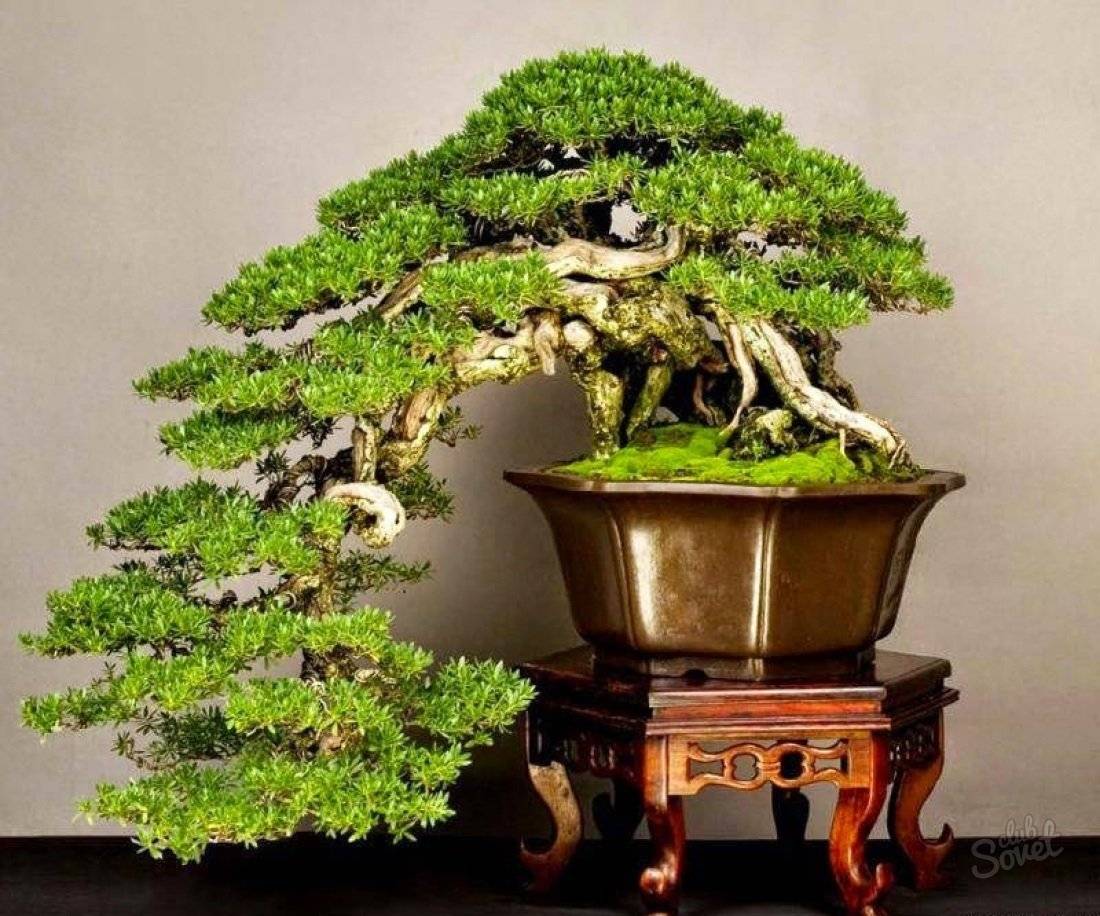 Create a miracle with your own hands
Create a miracle with your own hands
Growing bonsai is both an art and a painstaking work. He, like a living being, requires love and care. If you stick to these simple relationships, the bonsai will look amazing in the end. He will endow his master with his gorgeous look, Make him admire the bizarre shape, exquisite way.
Video
